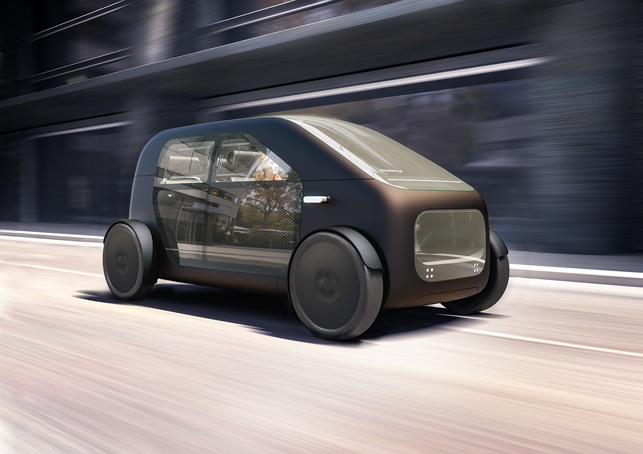
The Biomega SIN aims to take advantage of the greater design freedom offered by electrification and features motors at each wheel, outside the main cabin
As the world’s cities become more congested and more polluted, it’s clear that urban mobility is broken and that the problem needs fixing fast. Still, it was a surprise when Biomega, a Danish brand best known for its bicycles, both human- and battery-powered, announced plans in November 2018 to launch a four-wheeled, four-passenger vehicle.
The company certainly has credentials in the urban mobility space – but designing and launching an electric vehicle (EV) is an unexpected move from Biomega.
According to Guillermo Callau, head of EV design at the company, it’s something he’s been asked about a great deal in the last few weeks.
“Our answer is that we’ve been developing bikes for the past 20 years, since Biomega was founded,” he says. “The end goal has always been tackling urban mobility. The way we see it is that we provide solutions for transportation in cities – which, by the way, is completely non-functional at the moment.”
More bikes, he believes, could go some way to providing a fix, but they’re not the only solution to the problems of congestion and pollution. A wide range of transportation options are needed, among them cars – and Biomega’s interests aren’t limited to these two vehicle types, either.
“We’re definitely thinking of doing stuff that could be in between a car and a bike, and even products that are smaller than a bike are interesting to us.”
For now, Biomega’s concept car, the SIN, has been developed with a view to applying Biomega’s principles of social innovation, design thinking and urban mobility to the automotive industry.
The design for the SIN represents a heady mix of Biomega’s trademark integrated functionality. Check out the clean lines of the removable battery packs at the rear of the vehicle: there are no ugly, inaccessible Tesla battery packs here. Look how the team has taken advantage of a new kind of configuration, very different from that of a traditional vehicle, to give passengers more room in the cabin.
Solidworks is the main CAD modeling tool used in the design of the SIN, according to Callau, and the company relies on external partners using Alias Design for surfacing and Keyshot for rendering. “We’ve also used the Adobe Creative Cloud internally and done physical mockups of parts using 3D printing,” he says.
As with all of Biomega’s products, the SIN is named after a three-letter city code; in this case, the contemporary urban sprawl of Singapore inspired the concept. While it’s still early days for this CUV (crossover utility vehicle), its target specs are impressive.
The team is pushing for a price of €20,000, power in the region of 60kW, a range of 160 km and a top speed of 130 km/h.
Biomega – a huge market in the making
Whichever way you cut it, Biomega is entering a market poised for big things. In 2017, for the first time, global sales of new EVs passed 1 million units according to the Electric Vehicle Index from strategy firm McKinsey. This number, moreover, is forecast to almost quadruple by 2020, at which point, the industry will be shifting some 4.5 million units per year.
This will still represent a small percentage of overall light vehicle sales – around the 5% mark. But as governmental pressure and environmental concerns continue to force a shift away from the internal combustion engine and its reliance on fossil fuels, the growth rate is not expected to slow any time soon.
A particular point of interest is a recent flurry of activity around smaller-scale EVs, evidenced by the headlines grabbed by the likes of electric scooter-share companies such as Bird and Lime.
Even the perennial favourite of the urban mobility industry, the humble bicycle, is seeing increased electrification. In the UK alone, some £37.6 million worth of electric bicycles were imported in 2017. The global market, meanwhile, is thought to be around US $5.2 billion in 2017, with growth expected to reach $8.5 billion by 2025.
The journey from producing electric bicycles to producing electric cars is a natural progression for Biomega, according Callau. “While it’s quite a large package, we’re quite economic with the space inside. So the answer is yes, we’re doing a car – but it’s a very rational type of vehicle and, in that sense, is very similar to a bike.”
Both Biomega and the Skibsted Ideation team, the design agency behind Biomega, have decades of experience working across not just the Biomega brand products, but other projects including furniture, too. That said, developing an electric vehicle must have presented a challenge, so how did Callau’s team adapt to this new project and all that came with it? Did they need to hire in outside talent to help?
In fact, most of the work on the SIN was carried out by industrial designers accustomed to working on bikes and bike products. “We have been using consultants from the automotive industry,” Callau concedes, “but we’ve been limiting our, let us say, ‘contact’ with them, in order to tackle the object from a different perspective.”
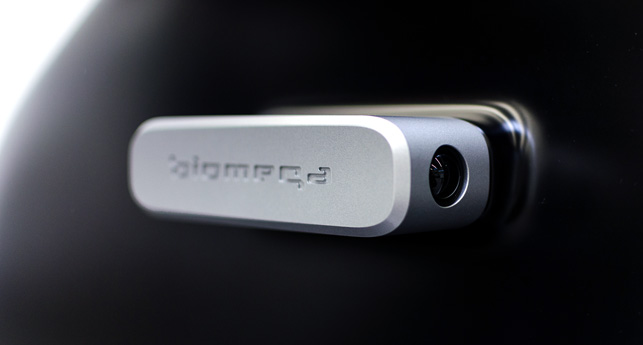
Biomega is known for its attention to detail, and its SIN EV is no different
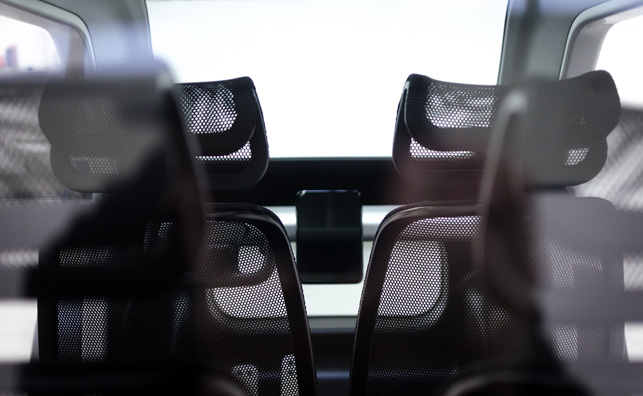
Cabin space is open, airy and built with passenger comfort firmly in mind
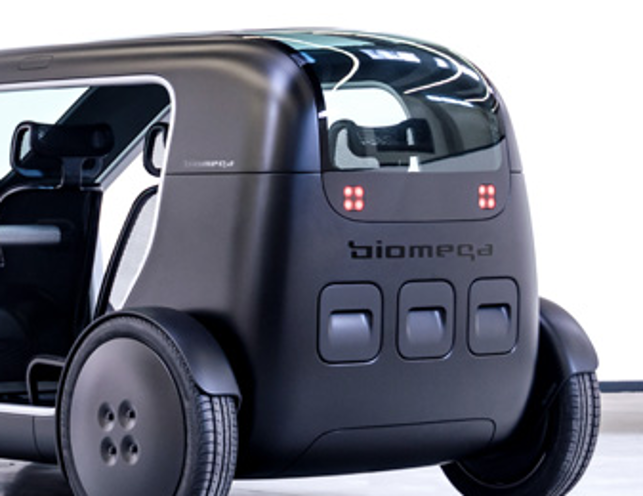
Removable battery packs supplement built-in energy storage
New horizons
A different perspective – and an entirely new one, it seems. On the whole, and from a pure design standpoint, EV development thus far has been a hit-and-miss affair.
Most of the action has centered on large-scale automotive companies converting existing product lines and technologies to support a different kind of powertrain.
That’s been the standard route to date, so it’s interesting to see how different a concept can be when developed by brand that is well-versed in urban mobility but doesn’t carry decades of baggage in terms of how a four-wheeled vehicle ‘should’ look and function.
So what exactly does Callau believe he and his team have brought to the party? “The car industry is quite conservative and there’s quite a bit of production and cost in mind with large car manufacturers,” he says. “That means they’re not able to move away from traditional designs. That’s one thing.”
The other thing, he says, is the industry’s ‘sense’ of the market, in that it believes that audiences are accustomed to certain types of car and won’t accept anything new or different. “We believe the opposite. We believe that the market is ready to take different types of car.”
Having shown off the car in Shanghai recently, says Callau, the most interesting feedback and comments focused on the SIN’s features, such as its front window, its flat floor, its clean interior and its semi-external wheels.
“Those are elements that most traditional cars don’t offer.
The way that we see it is ‘Ok, you have an electric car, so we can avoid having the cluster of the front engine, so we don’t have to design on top of that as traditional car designer would.’ We began by saying, ‘There’s no engine in the front, let’s just do a window’. You couldn’t do that before in an ICE [Internal Combustion Engine] vehicle,” he says.
“Another example is that we externalised the engine, by putting [the motors] in the wheels. Of course, this isn’t in full development yet, but that’s our idea. So by pushing the motors outside of the cabin where the passengers sit, we can externalise all kinds of things like sound, heat or vibrations and clear the space for the end users of the product, the passengers.”
So how has the team’s experience and know-how when it comes to electric bicycles influenced its design decisions with the car? “Essentially, it’s the same. We have a battery pack, a motor and a controller. We just scaled them up,” he says.
“Of course, we have high voltage, more heat from the batteries and a bunch of different regulations when it comes to cars, but it’s essentially the same kind of product. It’s much less mechanical than it used to be – the car industry used to be a lot of moving parts, a lot of mechanisms. Now it’s much more clean. You can have one or more small motors, you have a battery source, and controllers that control the power. If you compare it to a 1960s car, the amount of parts you have inside it is way, way less.”
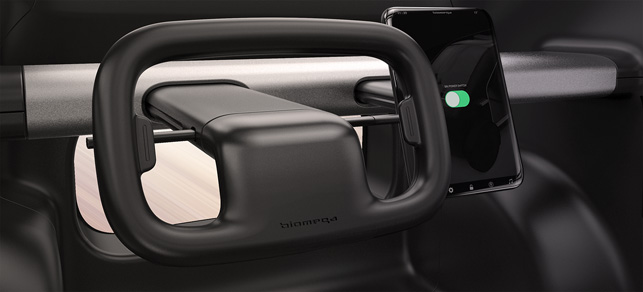
With its background in both transportation and industrial design, Biomega’s team can harness design skills to rethink the interior cabin and control layout
Biomega – the road to production
While the unveiling of a concept vehicle is always an interesting part of the process, the real challenges come into play when the concept is taken from the ideation and prototype stages into production.
Here, it’s clear that Biomega has both a plan and the backing it needs in place from a Hong Kong-based investment group. The team is now targeting production for 2022/2023, but between now and then, there’s still a lot of work to be done.
As Callau says, “We do have plans for production. The investment had been made in a traditional, normal way, as this has to a sustainable, working business model. We have created the concept car for this year, we’ll develop it further next year, bringing it one step closer to reality, by doing a functional prototype that includes batteries and motors.”
“You’ll also see several adaptations in the design that will bring it closer to what you will see a serial-production car; safety, homologation, regulations, ergonomics – all kinds of elements that need to be addressed in a more conservative manner. Therefore, what we’re going to do is adapt the design and tone it down a little bit, but with the end objective of having a manufacturable vehicle.”
Discussing how Biomega will bring this product to market brings up an issue that has become clearer in the last year or so. While the move towards electrification leaves many established automotive companies challenged on the issues of infrastructure and waste, there is huge opportunity to here for a far more diverse group of new entrants to the market to start building vehicles that directly address environmental concerns. That suggests there will be plenty of competition in the years ahead.
Callau agrees. “We’re industrial designers by trade and we used to only think of new innovations, have a bunch of fancy drawings and ideas in our heads. The thing with electrification is that the efficiency of batteries and motors, combined with the curve of cost, which has been moving down while efficiency moves up, means it’s now in the sweet spot where you can actually use it, and use those advanced motors and batteries, so that people like us can integrate them and not just keep the ideas in a drawing,” he says.
“It’s no coincidence that you’re seeing all kinds of stuff in this area, where you have scooters and such. It has all been driven by the advancements in batteries and motors recently. It has allowed a company like ours to get into the car world. Fifteen or twenty years ago, it was impossible – you had to develop your own ICE, it was too expensive. So it’s definitely a time that has aligned with our ideas and we now have the tools to implement them.”

Although just a concept at the moment, the SIN has not only been well received but also attracted some serious investment
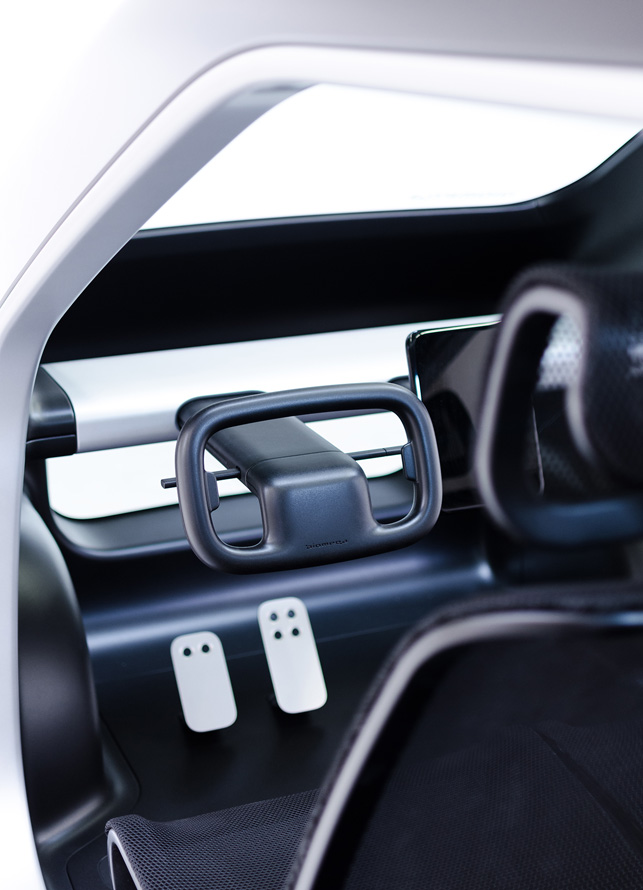
Biomega’s aim was to avoid the common tropes of automotive design and bring a fresh approach to the challenge
Smaller and nimbler
Biomega’s work on SIN is fascinating. The company has a wide range of skills and experience, not only in terms of urban mobility, but also in how to consider the product as a whole, rather than purely as a means to shift passengers from one point to another.
It’s also clear that the team is in it for the long run. It has investment and it has expanded a set of skills already rich in electric transportation know-how. Most importantly, it is applying its wealth of design expertise to one of the world’s greatest challenges. As Callau puts it: “We’re not interested in just doing some fancy concepts that are not affecting the world beneficially.”
In time, we may even see an autonomous vehicle from Biomega. “It’s something we’re really interested in,” he says. “We’re not developing machine learning algorithms in our company, but we believe that in a matter of five to ten years, this will be a service and we can see how we might integrate that service within our products, including all kinds of sensors and cameras necessary for that. We’re already looking into what kind of sensors we might need.
Basically, that’s a must-have for any vehicle manufacturer from now on.”
The whole ride-sharing concept, enabled by connectivity and smartphones, is also firmly on Biomega’s radar, he says. “We’re targeting sales and a production car by 2022/2023, but this could be a lease or a car-share vehicle.
We don’t see it as one or the other. We’re also open to a collaboration, so if a car hailing company is interested in talking to us, we can use a combination of their services with ours. I don’t think we’ll develop the entire ecosystem ourselves, but we could partner with someone. Whatever gets our products on the streets and helps people move around is good for us.”
As the world moves towards a more urban lifestyle, many are banking on EVs as the future of transportation. But alongside this, there’s also a smaller, quieter and arguably more nimble revolution happening. In short, there’s an urgent need, in particular, for transportation types that cover small distances more efficiently.
For example, the US Federal Highway Administration’s National Household Travel Survey for 2017 shows that almost six out of ten miles travelled by cars that year were on trips of less than five miles in distance. That suggests a market hungry for smaller, more nimble ways to get about.
It is perhaps here, in those short-distance journeys, that Biomega’s latest initiative will find its most comfortable home, as it continues along a journey that will be fascinating to watch.
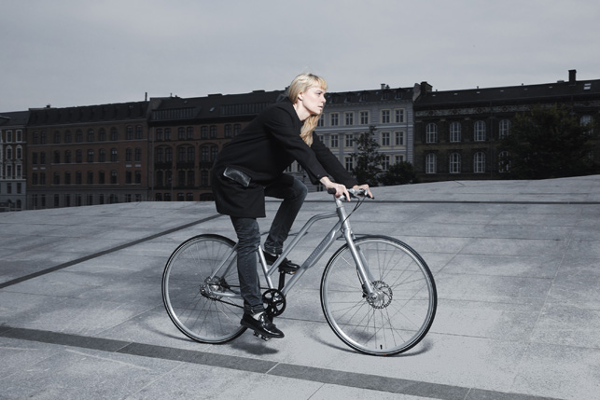
The Biomega NYC city bike has a truly iconic design
Iconic Biomega bikes
With a design tradition originating in Scandinavia, Biomega’s focus is fixed on staying true to a clear urban essence, a clean appearance, and a simple human-machine interface.
All the various bike designers that have been involved with Biomega’s work have taken on board four key design principles – integration, drivability, durability and visibility – and yet, they have all left personal and distinct touches on their designs for the perfect urban bike.
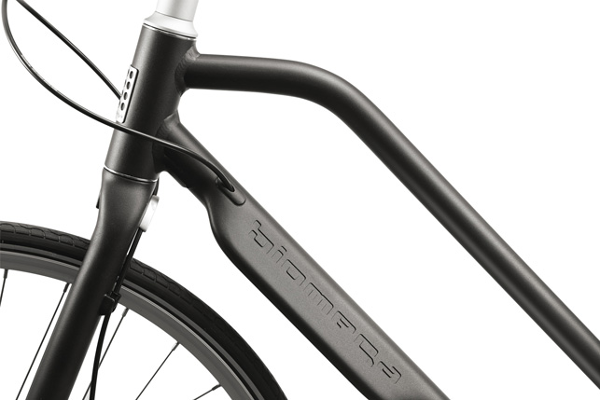
Features such as integrated mudguards are Biomega’s signature
Marc Newson was the first bike designer to work for Biomega. His futuristic, technically rigorous approach to bike design has influenced the language of Biomega’s product portfolio.
Since then, Biomega has collaborated with other prominent designers, from Ross Lovegrove, who launched the RIO, a bicycle made in Denmark and crafted from hand-picked bamboo from Brazil, to Beatrice Santiccioli, then Apple’s colour expert, who selected the original colors for Biomega’s collection.
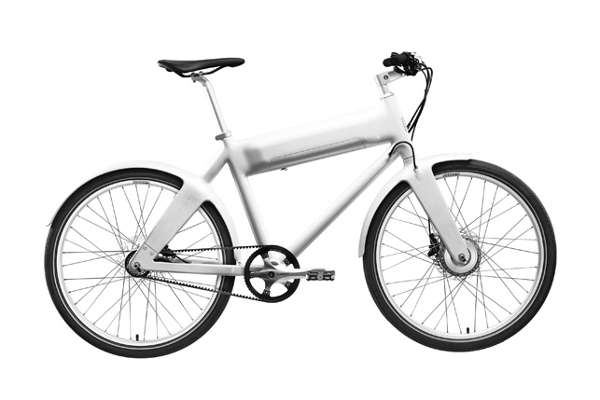
The team cut its teeth on two-wheeled electic vehicle design with the OKO E-bike
The founder of Biomega, Jens Martin Skibsted and his design group KiBiSi, shorthand for Kilo Design, BIG (Bjarke Ingels Group) and Skibsted Ideation, have been equally influential, because of the sheer number of product designs and unique creative direction and designed the iconic OKO and NYC models.
What has won the company its glowing reputation is its ability to provide familiar products, but ones that have integrated features that other vendors might neglect or avoid.
One example is the integral mudguards found on Biomega’s NYC city bikes. These were then taken further on its electric bicycle, the OKO, which sees mudguards built into both the frame and front fork.
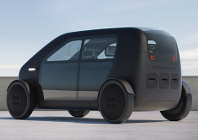
How Biomega plans to enter the electric vehicle industry
Default






